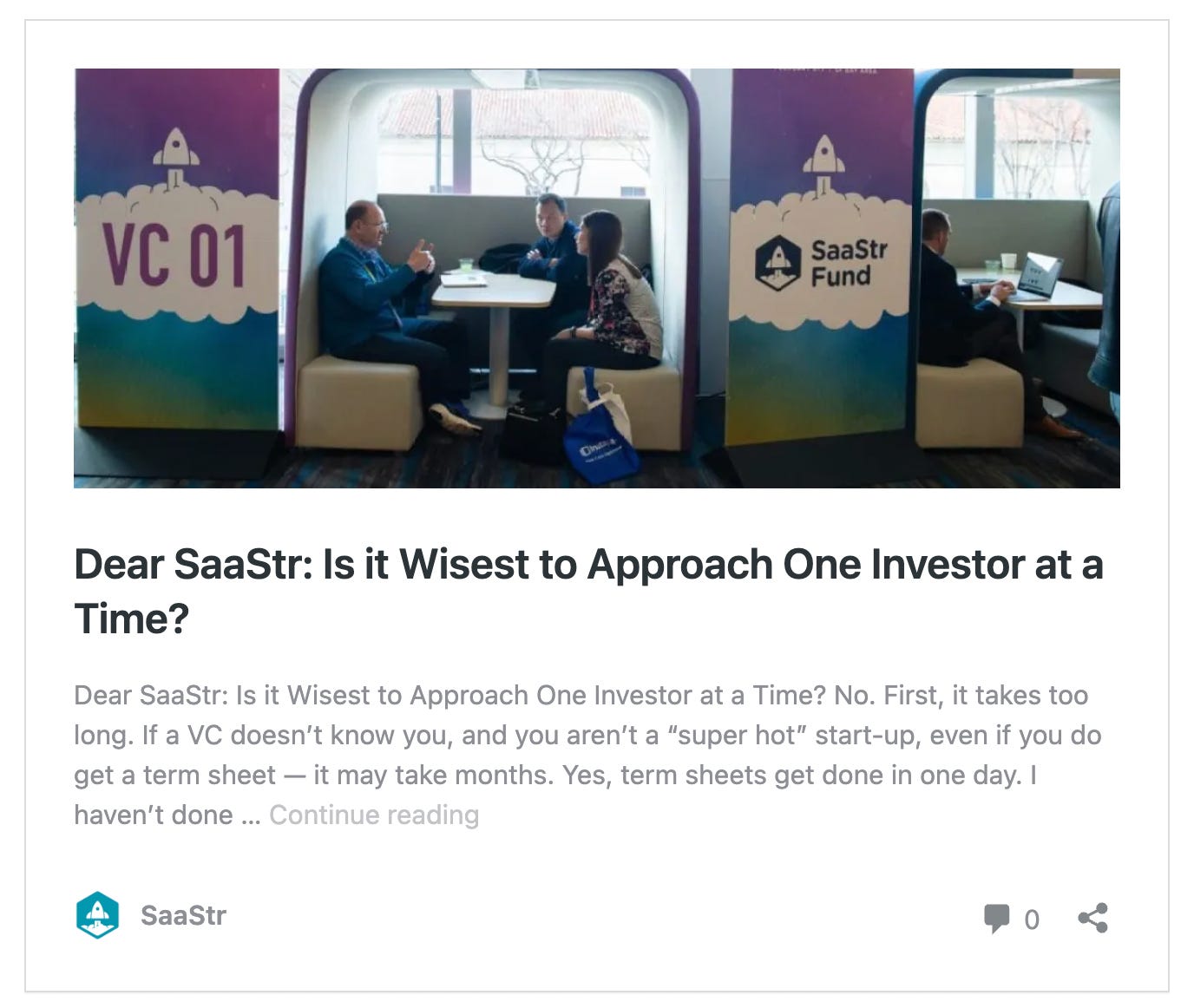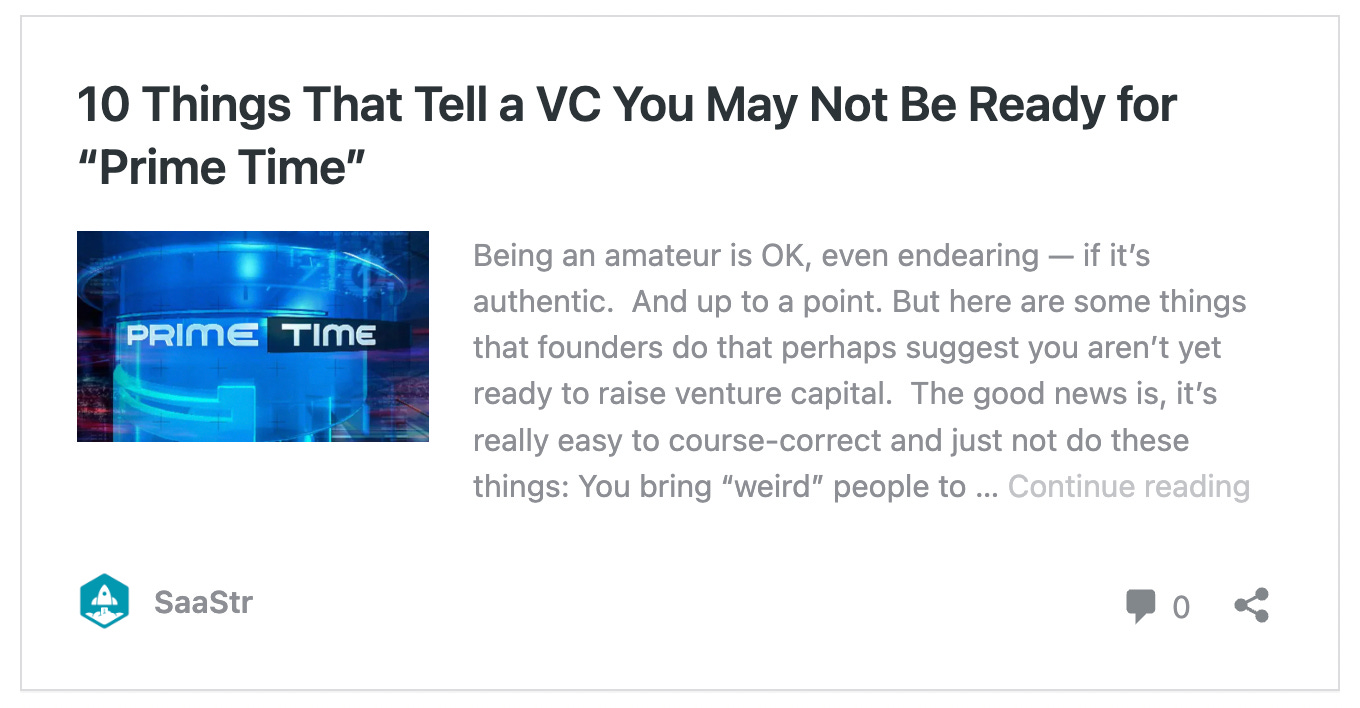10 Things To Know About Raising Venture Capital for The First Time
Fundraising is one of the most critical—and often misunderstood—parts of building a startup.
It’s essentially a specialized form of sales, where instead of selling a product, you’re selling equity in your company. Once you think about it that way, you'll understand the process and feedback loops much better.
Here’s everything I can share about it, broken down into key principles, strategies, and lessons:
1. Fundraising is Sales
At its core, fundraising is about selling stock in your company. You’re pitching a vision, a team, and a market opportunity to investors. Just like in sales, you need to:
Build a pipeline of potential investors (your "leads").
Nurture relationships over time.
Create urgency and FOMO (fear of missing out) to close the deal.
The best founders approach fundraising like a sales funnel:
Add as many qualified investors to the top of the funnel as possible.
Nurture those relationships consistently, even when you’re not actively raising.
Close deals by creating momentum and urgency when the time comess.
2. Timing Matters
The easiest time to raise money is when you don’t need it. Investors want to back winners, and if you’re growing fast and have cash in the bank, you’ll have leverage. Conversely, if you’re running out of money, it’s much harder to raise on favorable terms
You raise your first round (pre-seed or seed) on the promise of your vision and team. Later rounds (Series A, B, etc.) are raised on progress—your traction, metrics, and growth.
3. Build Relationships Early
Fundraising isn’t transactional—it’s relational. The best founders start building relationships with investors months (or even years) before they need to raise. This gives investors time to get to know you, track your progress, and build trust. When it’s time to raise, you’ll already have a warm pipeline.
Try to meet 1 investor a week if you can. Even if it seems like a waste of time, it won't be if you meet 52 a year.
4. Know Your Metrics
Investors are looking for predictable, scalable growth. You need to know your key metrics cold—things like:
ARR (Annual Recurring Revenue)
Growth rate
CAC (Customer Acquisition Cost)
LTV (Lifetime Value)
Burn multiple (how efficiently you’re spending to grow)
If you can show a clear path to turning $1 of investment into $3 or more in revenue, you’ll have a much easier time raising.
5. If You Can Fund It Yourself, Think About The 10%-10% Rule
Founders often raise outside capital even when they have their own money because they’re inherently conservative. Most are willing to invest up to 10% of their own wealth in a new venture, and another 10% in reserves if needed. Beyond that, they’ll look to outside investors to share the risk.
6. Choose Investors Wisely
You’ll be working with your investors for years, maybe even decades. Trust is more important than brand or valuation. A great investor will support you through tough times, while a bad one can make your life miserable. Look for investors who:
Understand your market.
Have a track record of supporting founders.
Share your vision and values.
7. Create FOMO. But Back It Up.
To close a round quickly and on good terms, you need to create urgency. This often means running a tight, well-organized process where multiple investors are competing to invest. The goal is to make investors feel like they’ll miss out on a great opportunity if they don’t act fast.
But don't bluff here, at least not too much. If you're telling everyone they have a week to decide, it better be true. It's really tough to go back a month later, hat in hand.
8. Be Transparent and Professional
Investors are betting on you as much as they’re betting on your company. Every interaction should build trust. Be honest about your numbers, your challenges, and your vision. Show up on time (or better yet, 2 minutes early), follow up promptly, and treat the process with professionalism.
9. Raise the Right Amount. Usually, About 125% of What You Think You Need.
There’s a balance to strike between raising too much and too little:
Raising too much can lead to unnecessary dilution and pressure to grow faster than is sustainable.
Raising too little can leave you scrambling for cash before you’ve hit key milestones.
Raise enough to comfortably hit your next set of milestones, plus a buffer for unexpected challenges. Many founders aim for 18-24 months of runway per round. Then maybe add +25% to that.
10. Fundraising in Tough Markets
In tougher fundraising environments (like 2023-2025), the bar is higher. Investors want to see:
Clear traction and growth.
Efficient use of capital (low burn multiple).
A strong team with a track record of execution 12.
You’ll need to be more prepared, more persistent, and more strategic in your approach.
Fundraising Lessons from SaaStr
Here are a few additional insights I’ve shared over the years:
Fundraise 52 Weeks a Year: Always be building relationships with investors, even when you’re not actively raising. This makes the process much faster and smoother when you do need to raise .
Write Your Own Investment Memo: Think like an investor. Why would you invest in your own company? Write it down and use it to refine your pitch.
Focus on Efficiency: Especially in the early stages, raise as little as possible while still hitting your milestones. This keeps you lean and minimizes dilution.
Common Mistakes
Raising Too Early: If you don’t have traction or a clear story, it’s better to wait and build more momentum.
Overvaluing Your Company: A high valuation might feel good in the short term, but it can create problems down the line if you don’t grow fast enough to justify it. Especially, and this may sound a bit "nice to have" in the early days, but be thoughtful raising much past a $100m ARR valuation until you are 50%+ sure you are on track to IPO.
Choosing the Wrong Investors: Don’t just take the highest offer. Look for investors who add value and align with your vision.
Fundraising is hard, but it’s a skill you can develop. The more you treat it like a process—just like sales—the better you’ll get at it.










